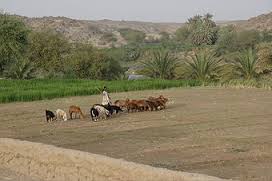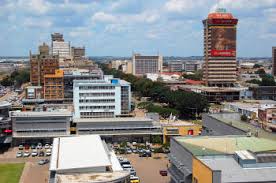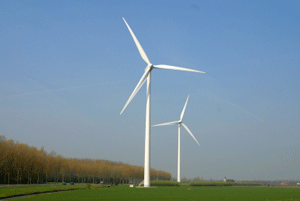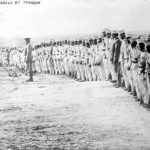Land And Agrarian Reform In South Africa: Caught By Continuities – DPRN Six
Introduction
Land and agrarian reform is often implemented with a view to breaking with the past, particularly by transforming ownership of land and its uneven distribution. The post 1994 land and agrarian reform in South Africa began with a similar agenda. In fact land reform was launched and implemented even before Apartheid was dissolved and the new ANC-led government took control. The Apartheid government under F.W. De Klerk initiated some kind of limited land reform during the period from 1990 to 1993.
In March 1991, De Klerk’s government repealed the 1913 and 1936 Land Acts. In November of the same year it appointed an Advisory Committee on Land Allocation (later renamed as the Commission on Land Allocation). The Commission made recommendations on state land disposal and the restoration of land to those disposed of formal land rights. This happened first in Natal, where dispossessed communities in Richards Bay (van Leynseele and Hebinck, 2008), Roosboom, Charlestown and Alcockspruit got their land rights formally restored in the years 1992-93 through this process (Walker 2004). The strengths and weaknesses of the pre-1994 land reforms were replicated post-1994 in the form of a lack of ‘coherent state procedures and institutional inadequacies’ to manage the land reform process (Walker 2004; 2005).
This paper explores the institutional dynamics by pursuing the argument that contemporary land reform policy and practices are characterised by continuities, rather than by discontinuities. Given the radical policy discourse of Reconstruction and Development, political and economic transformation, one may expect more discontinuities to occur than continuities. The shift from the early emphasis on human rights to paternalism and ‘productionism’ (from LRAD to SLAG) is testimony of what we would brand as continuities. The assumption of our investigation is that during Apartheid land use on white-owned farms was production and market oriented. Discontinuities no doubt occur; towards the end of the paper we will provide a few examples that show that land once designated for white ownership and ‘commercial agriculture’ is now being redeveloped into land owned by black people who by and large use the land – quoting an informant one of us spoke to in November 2007 in the Eastern Cape – ‘the African way’.[i]
The organising notion of continuity (and discontinuity) is useful for an analysis of changes over time. Continuity refers to the state of uninterrupted flow or coherence, or the property of a continuous and connected period of time (Oxford English Dictionary). Synonyms are persistence, enduringness, durability, lastingness, strength or permanence by virtue of the power to resist stress or force. The continuities that will be explored in this paper relate to the agricultural expert system that has gradually evolved in South Africa and which plays a prominent role in the design of land reform. The persistence of continuities would then indicate the extent to which dramatic transformations of the institutional infrastructure in agriculture have occurred. Historical analysis allows us to underline the continuity of prescriptions and modes of ordering in the past and present. Distinctions between the pre-apartheid, apartheid and post-apartheid periods belie the existence of important continuities.
The setting is the Eastern Cape Province, notably the regions formerly known as Ciskei and Transkei. The case material to underline the argument of continuity rather than discontinuity are entrenched in the prescriptive policies of the state with regard to land use as well as in the multiple responses of land users. Such policies are largely informed by agricultural expert opinions with regard to land use such that they have helped to create and order South Africa’s agrarian landscapes. The Glen Grey Act of 1894 evolved into Betterment Planning practices dictating and attempting to change land use patterns. Current land reform policies aim to prescribe similarly land use by paternalistically fixing land reform subsidies to forms of land use that fit into the category of ‘commercial agriculture’. Like James (2007), we intend to pursue the provoking argument that the current Department of Land Affairs (DLA) and National and Provincial Departments of Agriculture are rather similar to their Apartheid era predecessors, the Department of Native Affairs and the Native Agricultural and Lands Branch. Read more
Donors and Governance in Southern Africa. The Case of Zambia, with Zimbabwe as a Counterpoint – DPRN Seven
Introduction: On donors and governance [1]
A key change in development policy since the early 1990s has been donors’ shift towards a principal concern with governance. Earlier, donors’ policy and practice had been mainly focused on filling gaps in knowledge, capital or foreign exchange. This implied that development was fundamentally a mechanical, technical undertaking. Gradually, however, development policy is being seen more and more as a political enterprise. Issues such as the division of power between the elite and society at large, basic freedoms and economic inclusiveness are at least as important for societal and economic development as technical considerations.[2]
This concern with governance has given rise to a considerable body of literature that has a paradoxical tendency to de-politicise the debate. A reason for this is that politics traditionally does not fit into the non-political mandate of international organisations. Also, declaring a political interest seems to clash with the altruistic rhetoric of the development community. Nevertheless, recent evaluations and analyses have begun to explicitly address the political nature of both the environment in which donors intervene as well as the political influence donors have in processes of change. As an example the Swedish development agency (Sida) commissioned explicit political evaluations of conditional lending, program aid or ownership.[3] The British Department for International Development (DfID) has had a series of studies carried out on ‘Drivers of Change’[4] and Netherlands embassies have undertaken Strategic Corruption and Governance Analyses that aim to look ‘behind the façade’ at what drives political and bureaucratic behaviour.[5] These analyses see aid as an influence on local society that is, in turn, shaped by the local political process. This thus explicitly links aid effectiveness to the quality of governance. Read more
Censuur en zelfcensuur in de klassieke islamitische wereld
‘Verbrand rustig papier, want wat u daar leest
zit veilig opgeborgen in mijn geest
Het gaat met me mee, waarheen ik ook rijd,
staat stil als ik stop en sterft als ik overlijd
Zwijg over ‘t branden van papier en perkament;
zeg wat u weet, en men zal zien dat u verstandig bent’
(Ibn Hazm)
De Spaans-Arabische denker Ibn Hazm (Cordoba 994 – Niebla 1064) leeft in de westerse wereld voort door de ‘Ring van de duif’, een jeugdwerk vol melancholieke en misschien ook wel vroegwijze bespiegelingen over de liefde. Het boek is in vele talen vertaald, onder andere in het Nederlands in een vertaling van Remke Kruk en J.J. Witkam (Amsterdam, Meulenhoff, 1977, 2e dr. 1985). De islamitische wereld kent hem echter vooral als schriftgeleerde en grondlegger van een eigen islamitische rechtsschool. Hij was een moeilijk mens, buitengewoon onbuigzaam en principevast, en hij had daarnaast de gewoonte vrijelijk zijn mening te geven. Hij was voortdurend in conflicten verwikkeld met de schriftgeleerden van de gevestigde Malikitische rechtsschool, die hij als meelopers van het gezag beschouwde. In politiek opzicht was hij loyaal aan het Umayyadenkalifaat van Cordoba, hoewel dat tijdens zijn leven ter ziele ging en opgevolgd werd door een aantal lokale dynastieën die in het Spaans bekend staan als de ‘Reyes de Taifas,’ partijkoningen. Hij kwam in aanvaring met de machthebber van Sevilla door hem in een van zijn boeken te ontmaskeren als een fraudeur en een moordenaar. Het was deze zelfde heerser die op gegeven moment de opdracht gaf om zijn boeken publiekelijk te verbranden, waarop Ibn Hazm de bovengenoemde dichtregels schreef (Asín Palacios 1927-32, I, p. 230-235). In het gedicht lijkt hij het incident te willen bagatelliseren omdat alleen de papieren dragers van zijn gedachten vernietigd worden, niet de geest die deze gedachten heeft geproduceerd. Dat komt wat naïef over, omdat hij niet lijkt te beseffen dat het papier wel degelijk essentieel is om zijn gedachten te kunnen verbreiden, en verbreiding van zijn gedachten is wat elke auteur tenslotte wil.
Dit voorval illustreert het aloude spanningsveld tussen de behoefte van de individuele burger om zijn mond open te doen en het belang van de samenleving als geheel. Dit belang bestaat uit twee elementen, het morele belang van de openbare zeden en het politieke belang van de openbare orde. In vrijwel alle samenlevingen zijn het de geestelijke en wereldlijke autoriteiten die over dit tweeledige belang waken. In het Westen hadden we, vooral sinds de uitvinding van de drukpers, het instituut van de censuur, uitgeoefend door Staat of Kerk. Deze censuur moest noodzakelijkerwijs op strakke, ambtelijke wijze georganiseerd worden. De drukpers gaf de mogelijkheid om zeer snel en op grote schaal ideeën te verspreiden, en er moest dus slagvaardig worden opgetreden om de verspreiding van ongewenste ideeën te voorkomen. In de periode daarvoor, toen boeken nog moeizaam met de hand gekopieerd moesten worden, ging de verspreiding van teksten veel minder snel en waren er minder schrijvers en minder lezers. Beide laatste categorieën behoorden daarenboven tot de sociale laag die het dichtst bij het officiële gezag stond. Dat betekende dat de controle over het geschreven woord makkelijker uitvoerbaar was en dat er dus geen grote organisatie of ingewikkelde regelgeving nodig was om die controle te realiseren.
De uitvinding van de boekdrukkunst mag dan gelden als beginpunt van de censuur als ambtelijke instelling, maar dat betekent nog niet dat er daarvoor in het Westen geen samenhangende pogingen werden ondernomen om het geschreven woord te controleren. Zo woedde er in de dertiende eeuw aan de universiteit van Parijs een debat over de verhouding tussen de christelijke orthodoxie en de filosofie van Aristoteles en diens Arabische commentatoren, zoals Averroës. In 1210 en 1215 werden de ‘Arabische commentatoren’ verboden, in 1231 werden ze gecensureerd toegelaten en in 1255 werden ze officieel aan het curriculum toegevoegd. Uiteindelijk stelde Étienne Tempier, bisschop van Parijs, in 1277 een lijst van verboden opvattingen op. Ieder die bijvoorbeeld de opvatting verkondigde dat de wereld eeuwigdurend was of dat God niet rechtstreeks kon ingrijpen in de gebeurtenissen op aarde kon rekenen op excommunicatie (Wilson 1996, II, p. 1017-1018, Piché 1999, p. 160). Read more
Wind als inkomstenbron voor de leefbaarheid ~ Stichting Windmolens Ternaard
Maart 2014. In de provincie Utrecht zoeken pioniers elkaar op om alternatieve energiebronnen aan te boren en gezamenlijk zonnepanelen te plaatsen. In Friesland zijn ze een stap verder, daar spelen organisaties van dorpsbelang al jarenlang een actieve rol bij de energiewinning. Zoals in Ternaard, waar de winst uit vijf dorpswindmolens de hele dorpsgemeenschap ten goede komt. Jaarlijks kunnen ze daar circa 20- tot 30.000 euro besteden aan energiebesparing, sociale projecten en verbeteringen van de leefomgeving. Pepijn Binkhorst van de Natuur en Milieufederatie Utrecht (NMU) ziet ook in Utrecht mogelijkheden voor dorpscomités die bereid zijn hun nek uit te steken.
Ternaard is een dorp met krap 1500 inwoners en ligt aan de kust van de Waddenzee, de kop van Friesland. Het is een van de regio’s in ons land waar bevolkingskrimp op de loer ligt. Met bijkomende kwalen als wegtrekkende jongeren, werkloosheid, vergrijzing en economische malaise. Alle reden dus om op zoek te gaan naar creatieve oplossingen. Frederik van der Lugt, destijds voorzitter van de vereniging Dorpsbelangen Ternaard, vatte vijftien jaar geleden het plan op om windmolens rond het dorp te plaatsen. Tegenwoordig is hij voorzitter van de stichting Windmolen Ternaard: ‘Ik zag een enorme toekomst in het verschiet liggen voor windenergie. Helemaal zo dicht bij de kust, wij wonen hier in een van de meest windrijke omgevingen van ons land.’
Aarzelend
De vijf molens die rond het dorp staan zijn voor 70 procent in het bezit van de bewoners, verenigd in de Stichting Windmolens Ternaard. De resterende dertig procent is in handen van een drietal boeren die de molens op hun grondgebied hebben. Het unieke van het initiatief in Ternaard is dat de initiatiefnemers hun ideële doelstelling van schone energie op een slimme manier combineren met, zakelijk gezien, een lucratieve aanpak en een sociale besteding van de opbrengsten. De financiering van de molens is afkomstig van participaties door de dorpsbewoners zelf. Dat is in drie tranches gegaan blikt de initiatiefnemer terug op het prille begin. Van der Lugt: `De eerste tranche verliep nog aarzelend. Ondanks een rente van tien procent die wij in het vooruitzicht stelden. Het kostte aanvankelijk moeite om mensen hier te overtuigen. Toen dat eenmaal lukte, waren we heel snel door de tweede en derde tranche heen.’ Read more
Time to say Good-bye
 September 20th 2009 – a short walk through the busy city of Brussels: Journées du Patrimoine and Dimanche sans Voiture – though using the car is apparently not forbidden it is widely accepted not to use it. Nevertheless, the streets are crowded.
September 20th 2009 – a short walk through the busy city of Brussels: Journées du Patrimoine and Dimanche sans Voiture – though using the car is apparently not forbidden it is widely accepted not to use it. Nevertheless, the streets are crowded.
The sun is shining, and it is ideal for people from the Belgium and European capital to enjoy lovely day outdoor. Not just the Grand Place is reminiscent of a modern version of Pieter Brueghel’ s paintings but the main streets are occupied by colourful ado. Variegated syllables in different languages, the sound of music from everywhere and the people in their various dresses: simple and modern, jaunty and a little bit frivolous or conservative-respectable. Men, women – showing their faces au naturel and others who still look more like a masque of themselves – despite the vibe of the folk’s fair, despite people apparently taking over the lead.
And it is in the middle of this hassle and bustle and bursting joyfulness that I begin to get contemplative: Finally a decision had now been taken – a decision that stood in waiting position since some time, but loosely only, still needing confirmation. And a decision that is not really a single event – it is part of a series of events, decisions, part of a long development. A historical decision? A fundamental change?
So many decisions had been taken and are frequently taken – though they seem to be large or small, we do not really know what their meaning is in the historical development – a history made by men, a history that is made by us and nevertheless weighs as nightmare on our shoulders.






